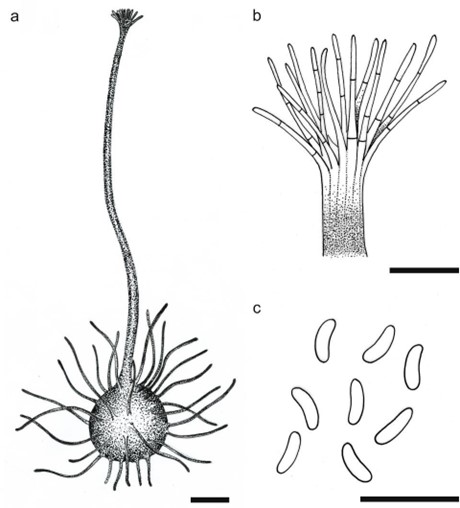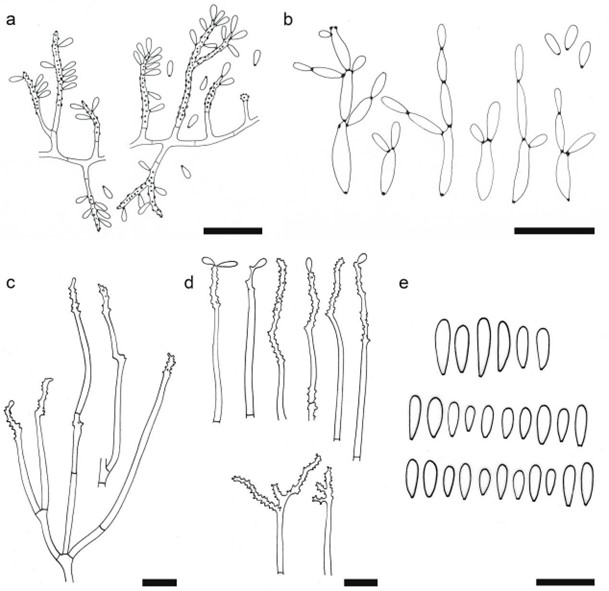Ophiostoma Syd. & P. Syd., Annls mycol. 17(1): 43 (1919)
MycoBank number: MB 3614; Index Fungorum number: IF 3614; Facesoffungi number: FoF 01808; 134 morphological species (de Beer et al. 2013), 62 species with sequence data.
Type species – Ophiostoma piliferum (Fr.) Sydow & P. Sydow
Notes – de Beer et al. (2013a) accepted 134 species in Ophiostoma and some species are important tree pathogens, such as O. ulmi and O. novo-ulmi, the causal agents of Dutch elm disease, transmitted by elm bark beetles (Webber & Gibbs 1989, Brasier 1991). The sexual morph is characterized by globose to subglobose ascomata, surrounded by external hairs, with ostiolar necks and some species containing divergent, ostiolar hyphae. The asexual morph has sporothrix- like or pesotum-like conidiogenous cells with ellipsoidal to cylindrical obovate, globose and aseptate conidia. The asexual morph of Ophiostoma piliferum is illustrated in this entry (Figs. 184, 185).

Figure 184 – Ophiostoma piliferum (redrawn from Osorio 1985). a Ascoma. b Ostiolar region with ostiolar hyphae. c Ascospores. Scale bars: a-c = 10 µm, b = 5 µm.

Figure 185 – Ophiostoma piliferum. a Conidiophores and conidia with sporothrix-like conidiogenous cells. b Conidiophores and conidia with raffaelea-like conidiogenous cell structure (redrawn from Osorio 1985). c Conidial apparatus. d Conidial apparatus from various living cultures with conidiogenous cells. e Conidia (redrawn from de Hoog 1974). Scale bars: a-e = 10 µm.
Species
Ophiostoma piliferum
